
Can we help? 01942 521919
Contact us At Belmont, we’re more than just a packaging supplier. We’ve been helping our customers enhance their brands through sustainable packaging for over 40 years, so we know a thing or two about what makes a great product package. We’ll teach you everything you need to know throughout this guide to push your product packaging to the next level.
The main purpose of a package is to protect the contents from any damage that may arise from shipping, handling or other sources. A durable package will keep a product safe from the point it’s shipped through to its end destination. Whether that’s a supermarket shelf or a customer’s home.
However, a package can be so much more than just a way to protect your goods from the elements. The purpose of a great product package is to amaze your customers and enhance your brand.
Product packaging is an important part of the overall customer experience. The best packaging design will improve that experience, delighting or tantalising customers. Clever product packaging will make that monthly subscription box even more enjoyable, or grab shoppers' attention as they walk down the supermarket aisle. Choosing the right cardboard package will ensure your brand and product is memorable.
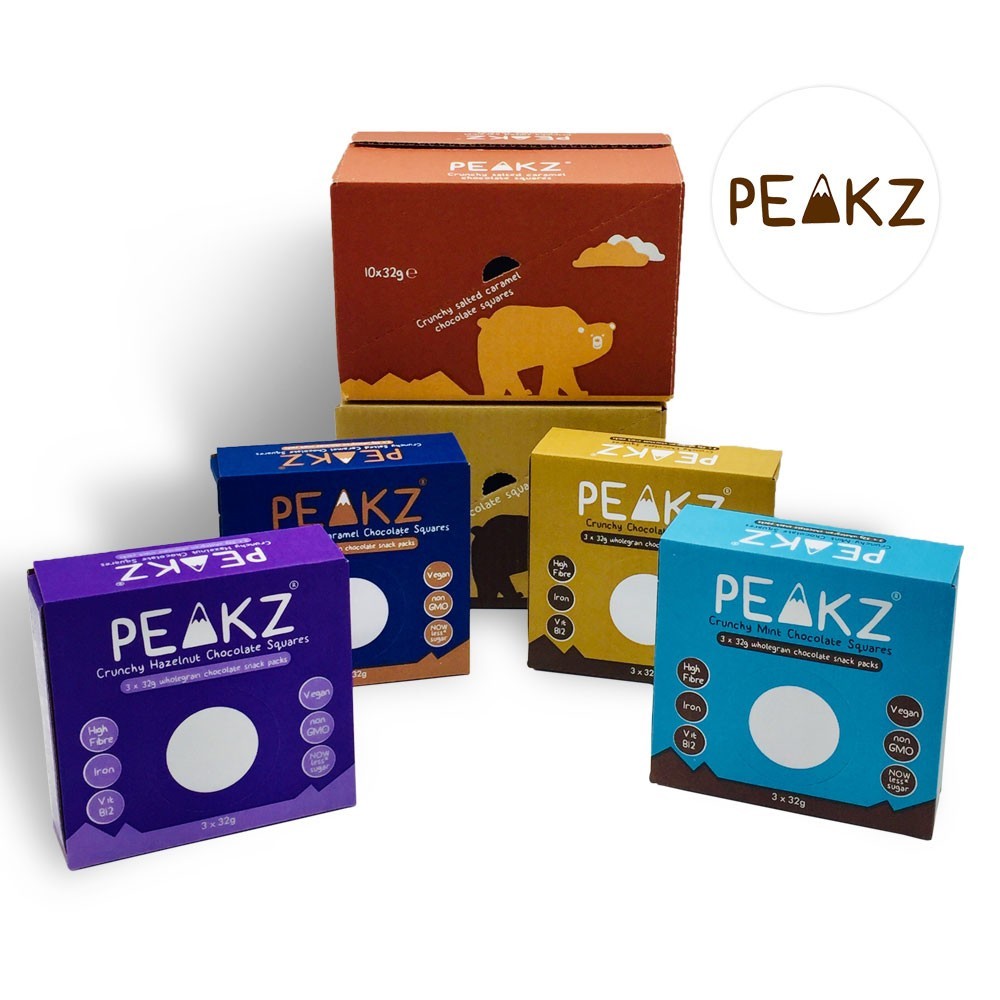
Peakz is behind delicious vegan chocolate snacks that are consciously and ethically made. The team at Peakz approached us as they needed cardboard packaging with a fresh design featuring their company mascot, Nanook. The result was a package that would protect the snacks in transit and stand out on shop shelves.
"We absolutely love them. Great quality and vibrant colours. Very happy and cannot wait to order more in the next few months."
Aalya, Peakz Co-founder
Read the full Peakz case study.
When it comes to choosing the right packaging for your business, it can sometimes be overwhelming with the amount of choice available to you. If you’re only just getting started you might not know the difference between retail-ready packaging and display packaging. So to bring you up to speed we’ll quickly run through the different types of cardboard packaging you’ll commonly find.
Shelf-ready packaging and retail packaging are designed to go from protecting your products in transit to quickly stocked and sold on retail shelves. This type of packaging needs to be durable and well-designed to make sure your products are secure and look great in-store.
Below is an example of some retail-ready packaging we created for Morrisons that you might have seen in your weekly shop.
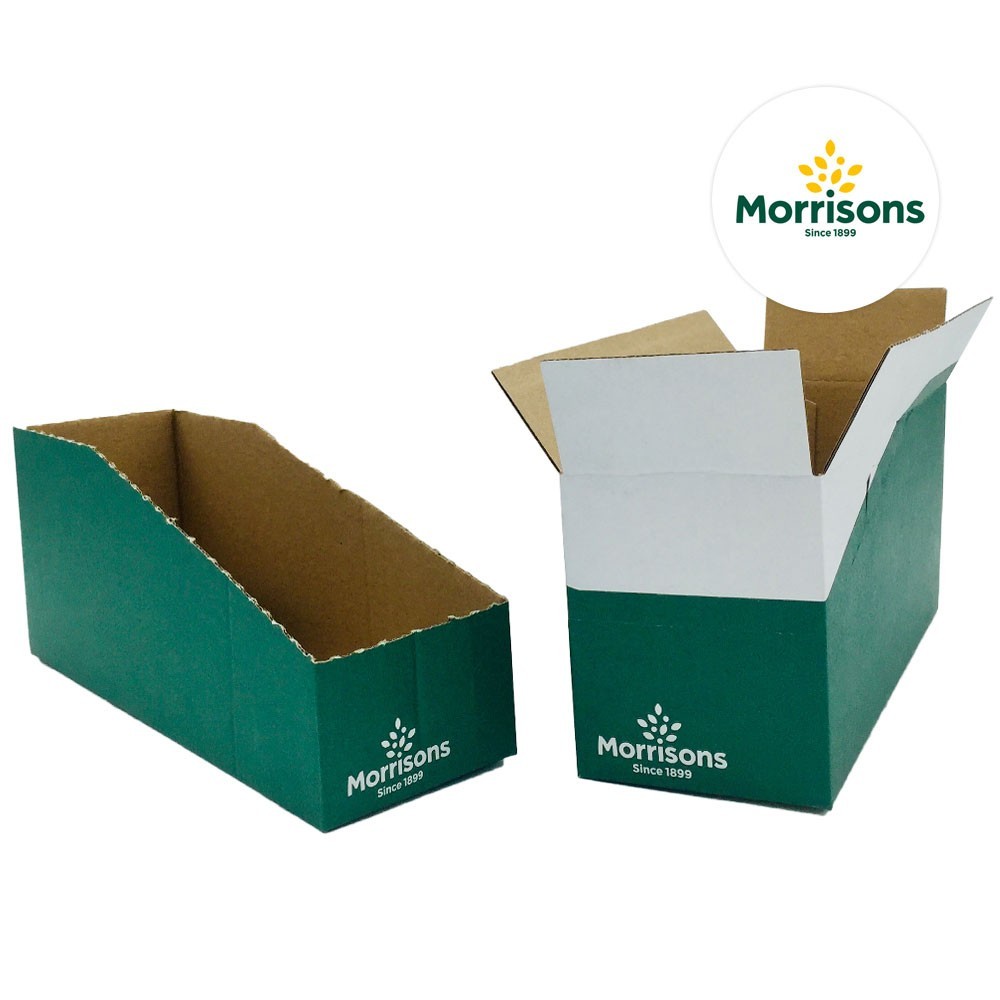
Display packaging is a type of cardboard packaging used to promote products at the point of sale. Great display packaging needs to make an impact to stand out in a retail environment. Think of it as another way to promote your products directly to consumers.
Below is an example of a display package we created for Hallmark to promote their Star Wars merchandise in-store.
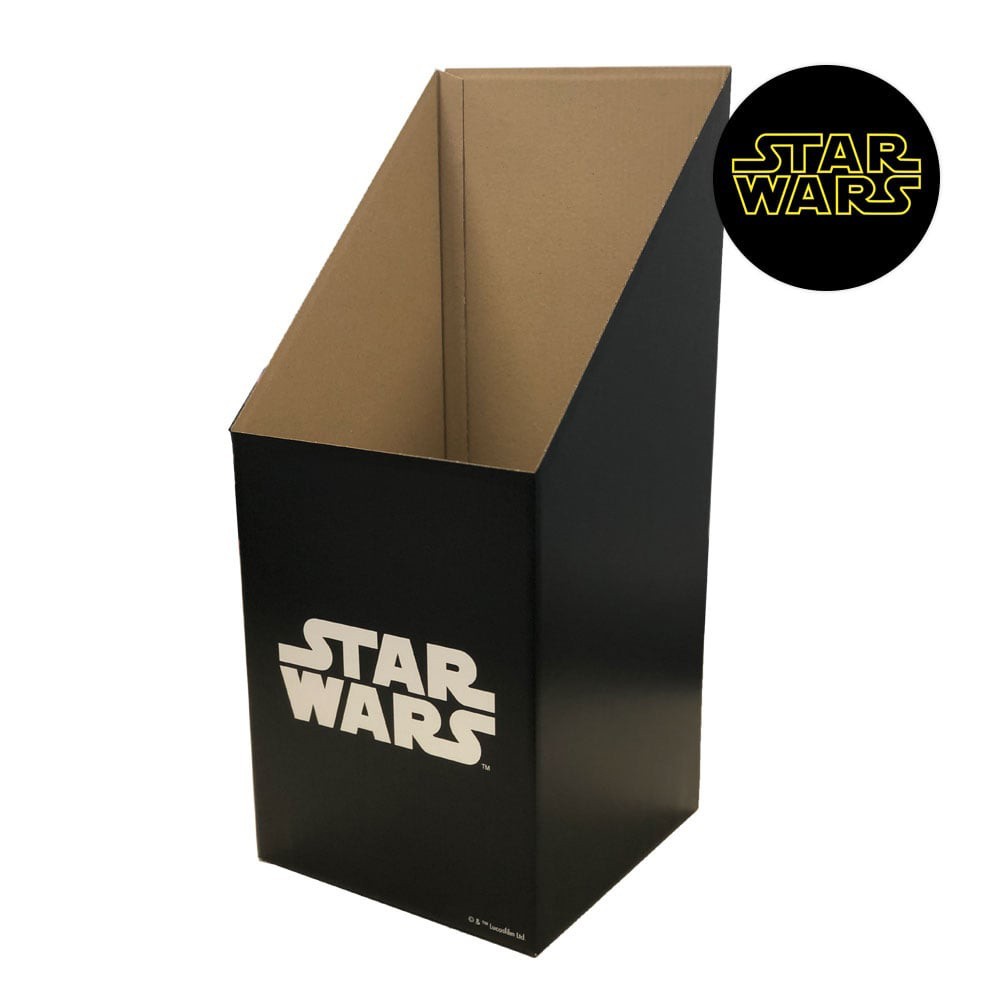
Transit packaging is designed to keep your products safe when they’re being shipped and transported. These types of packages can be big, small and everything in between. The best transit packaging will be made with sturdy corrugated cardboard to protect what’s inside and lightweight to reduce overall package weight.
Here is an example of a recent transit package we created for Bulldog Skincare.

Subscription box packaging is made from corrugated cardboard and comes in a wide range of designs, shapes and sizes. More than any other type of packaging, subscription boxes play a crucial role in the overall customer experience. If customers are going to subscribe month on month, you want the experience of receiving, opening and discovering what is inside to be as enjoyable as possible.
Below is a recent example of a subscription box we created for Taylors of Harrogate.
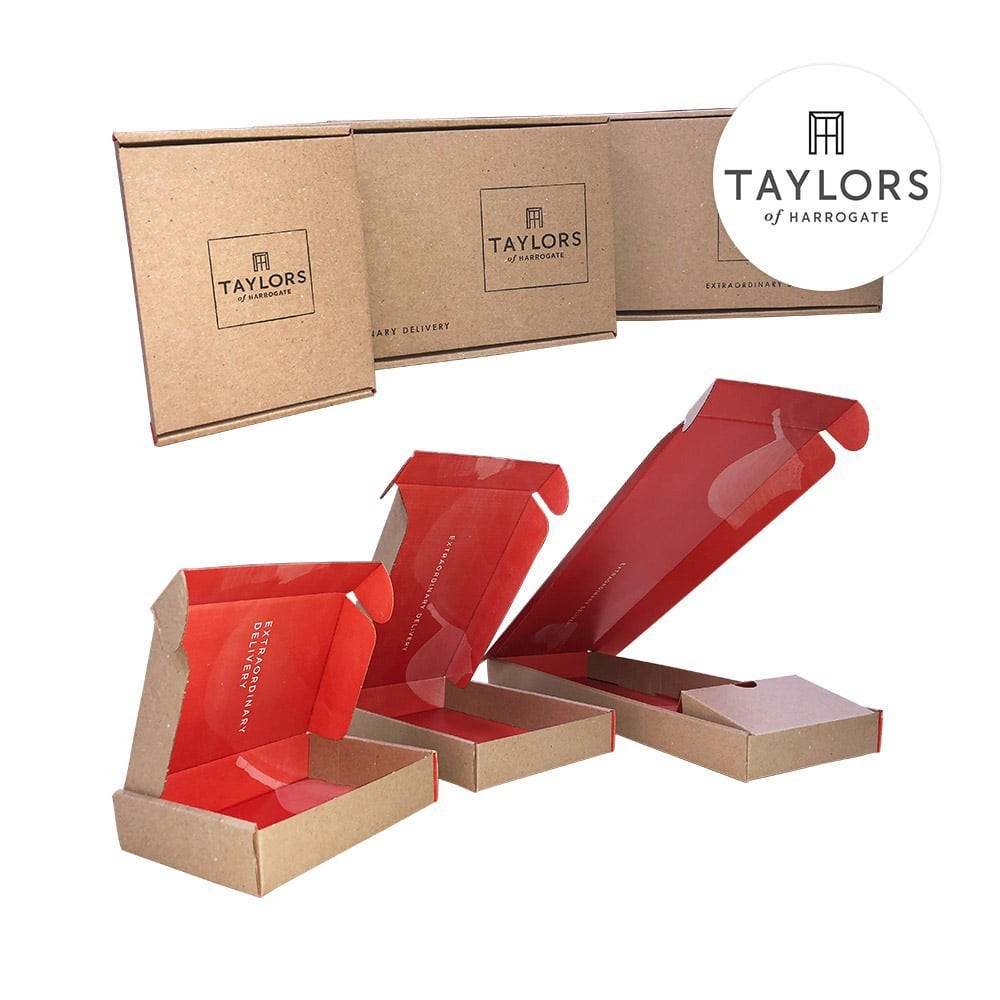
When it comes to transporting chemicals and aerosols even greater care needs to be taken to make sure the contents aren’t damaged. That is why chemical and aerosol packaging should be manufactured using sturdy, durable cardboard to safeguard the items in storage and as they’re transported from point A to point B.
Below you can see a fantastic example of this type of packaging we created for VIRUSEND™ to store and transport their disinfectant spray.
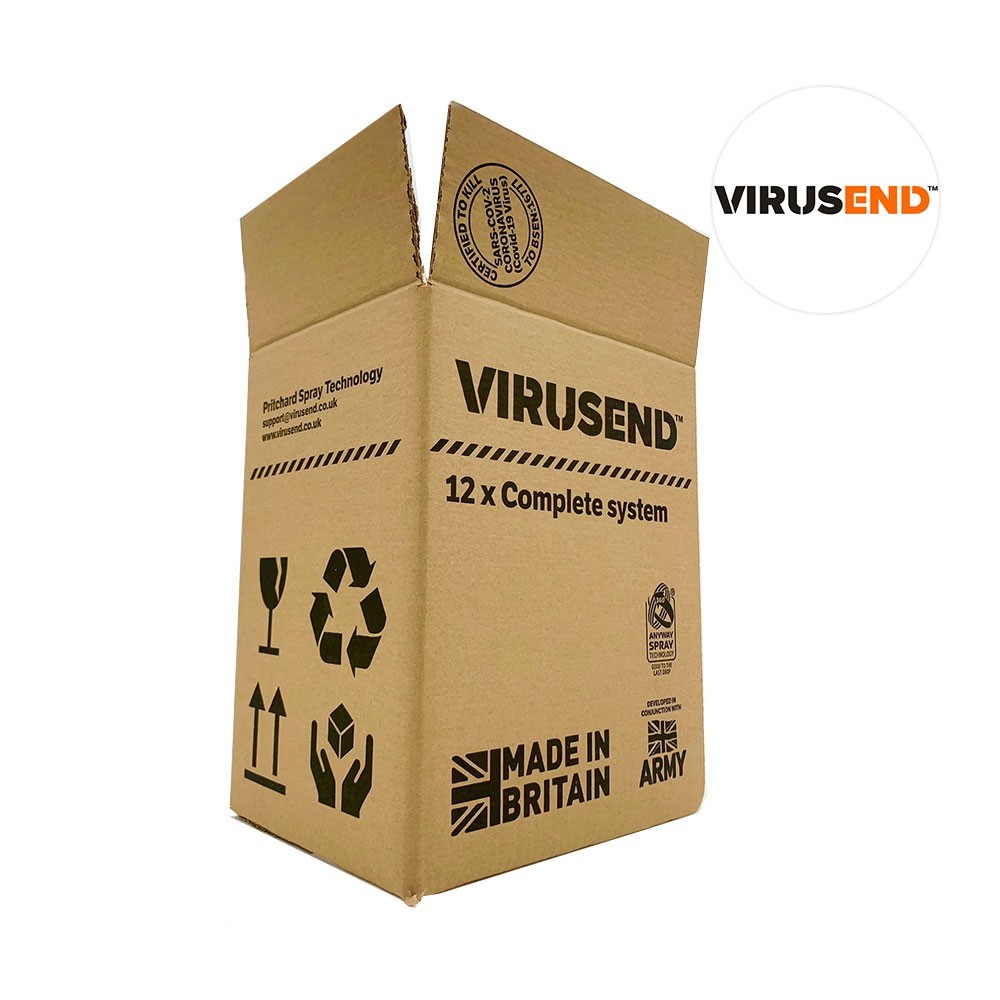
Self-sealing packages offer a secure way to send products through the post with the ability to return the item well-protected if the order needs to be shipped back.
Custom packaging as you might have guessed is packaging designed specifically around your product. Instead of an off the shelf cardboard box, custom packaging allows you to be creative and provide your customers with something unique and memorable. Cardboard packaging can be customised to whatever specifications you need, so why settle for a plain old box?
Now that you have a better understanding of the types of packaging and their different uses, let's move on to the fun part which is product packaging box design. In this chapter, we will examine why design is important for your products and what good packaging design looks like.
Whether you’re looking for clever packaging design or simple packaging design, we will walk you through the steps you need to make something your customers will love.
First things first, let’s take a look at how to design a package for your product. To illustrate the product packaging design process we’ll go through the five steps we always take with our clients.
Designing a package may seem daunting at first, but here are a few tips to ensure your boxes come out looking great.
Designing a product package isn’t just about the shape and size of the box, or what’s printed on it. It’s also about selecting the right material. If you’re making transit packaging you’ll need a sturdy, lightweight cardboard box. Don’t worry if you don’t know your way around different cardboard grades yet, we’ll teach you all you need to know later in the guide.
There’s nothing worse than designing a package that your customers find confusing or hard to open. When you’re working on your design, think about how your customers are going to be using it. For example, a retail-ready package needs to be optimised so that it can be quickly stocked and shelved.
This may seem obvious, but when you're designing packaging for your product you should make sure that it fits properly. Take into account everything that will be shipped in the box. Imagine going through the whole process of getting the box designed and made only to discover it’s too small. This is why we always ask for a sample of the product or images along with exact measurements.
Like the product itself the packaging you ship reflects your brand. When you’re designing your package, think about what you want your customers to see and feel when they receive that parcel. Before you’ve settled on an idea, ask yourself whether it does a good job of representing your company. A great package box design will enhance your brand and improve the customer experience.
Your display box or retail packaging won’t do a great job of selling your products if it has a boring design. Even simple packages can grab peoples’ attention, so aim for something that will wow your customers. If you’re stuck on ideas, take a look at some of our product packaging examples in the next section.
This is the most important part of designing winning product packaging. Even if you follow all the other package design best practices it won’t matter if it’s not what your customers want. When you're creating the product packaging, make sure you're designing it for them and not yourself. If you’re not sure, why not ask them? Getting feedback from your customers is a great way to design something you’ll both be happy with.
So you’ve hit a wall coming up with an initial idea for your package. Don’t worry we’ve all been there. That’s why we have put together a board of some of our favourite designs to help give you some inspiration for your own amazing packaging ideas.
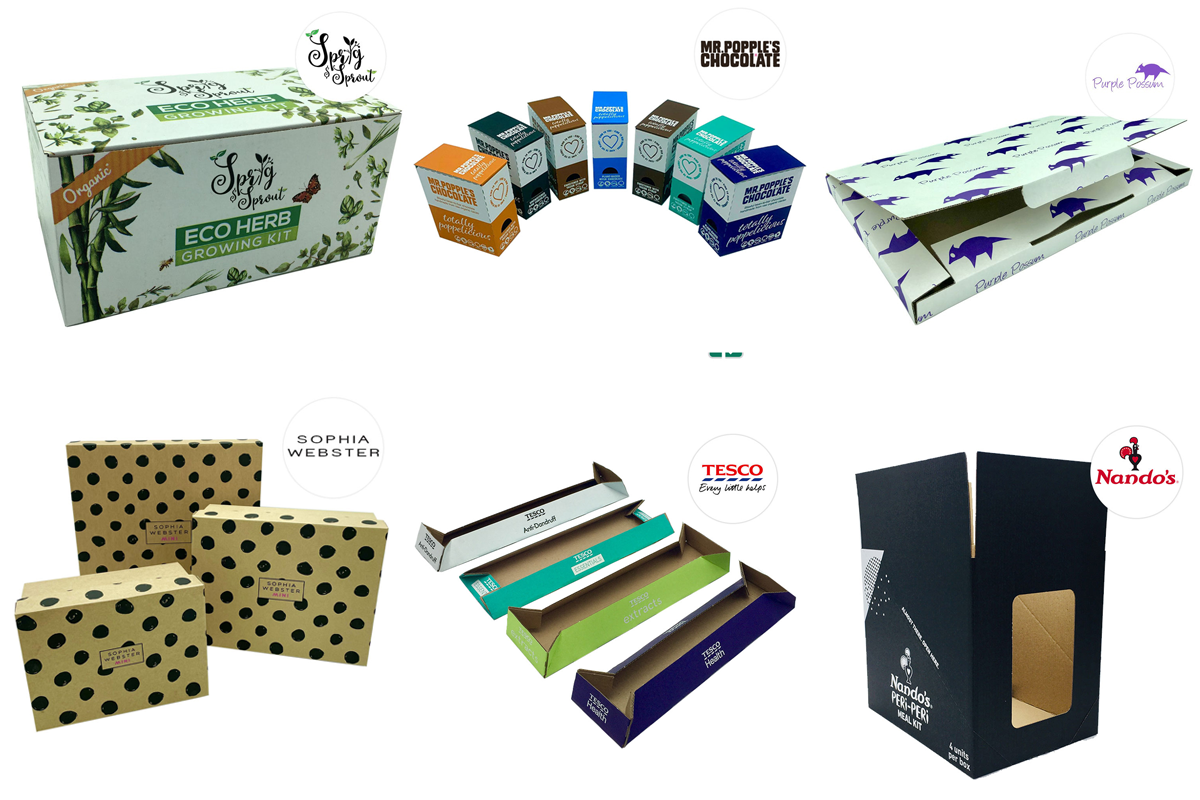
Now that you understand why packaging is important and what makes a good design, we’re going to take a look at the packaging process. This chapter will teach you how packaging is printed, what FEFCO styles are, and the different cardboard grades available.
Have you ever wondered how all those intricate designs are printed on cardboard packaging? Well, this is done through a process called flexographic or flexo printing.
Flexographic printing is a printing process that uses a flexible printing plate. You can liken it to a high speed, modern version of the classic letterpress. Flexography can be used to print on almost any type of material including cardboard, plastic, metal and paper.

During the package design process, you may have come across offset printing as another printing option. So what is offset printing and how does it differ from flexography? Offset printing uses a method where the image is transferred from a large etched plate to a rubber blanket and then pressed onto the printing surface.
So what is the advantage of flexographic printing over offset printing?
The main advantages of flexographic printing are -
When you’re looking to have a product package manufactured you may be asked for the FEFCO style or code. In this section, we’re going to take a quick look at FEFCO styles, explaining what they are and what they’re used for.
FEFCO is the European Federation of Corrugated Board Manufacturers, a non-profit organization that represents the interests of cardboard manufacturers in the UK and Europe.
In the 1960s, FEFCO created a code system to simplify and remove some of the confusion around cardboard box descriptions. The FEFCO codes allow customers and box manufacturers around the world to clearly and accurately communicate box styles. When you provide a FEFCO code to a manufacturer they will immediately know the style of box you are looking for, even if they speak a different language!
The FEFCO style code is a four-digit code that is broken into two sections. The first two digits are the box category and the last two digits are the box style. In the example below 02 is a slotted box (category) and 01 is the style of slotted box.

There are eight basic categories, which are -
These are rolls or sheets of corrugated cardboard which are often used in protecting certain goods like glass during transportation.
Slotted-type boxes are a single piece of cardboard with a glued, stitched or taped manufacturer’s joint and top and bottom flaps.
These boxes consist of more than one piece and feature a lid and/or bottom telescoping over the body of the box.
These boxes consist of only one piece of cardboard, with the bottom of the box hinged to form two or all side walls and the cover.
These boxes consist of several liners and sleeves sliding in different directions into each other.
These boxes consist of two separate end pieces and a body and require stitching together before they can be used.
Ready-glued cases consist of one piece of cardboard that is shipped flat and ready to use with a simple set-up.
These are inside liners, pads, partitions, dividers etc.
Picking the right material is one of the most important decisions you will make when your making product packaging. That is why it’s important to understand the different corrugated cardboard grades you will come across. Before we get started, let’s look at how a basic piece of corrugated cardboard is constructed.
Your average cardboard sheet will be made up of three components.

Cardboard flute types
The flute within the cardboard can come in a variety of different sizes which can range from very fine (E) to more heavy-duty flutes (A-B) which are usually used in transit packaging. The different flutes and wall types of the cardboard you choose will define the characteristics of your package such as its strength and rigidity.
The most common flute types are -
If you need extra durability and strength for your packaging, extra fluting and liners can be added. This would be what we call a double or triple wall corrugated cardboard depending on how many are added. The most common corrugated cardboard wall types are -
If you would like to know more about the advantages of corrugated cardboard you should read our ultimate guide on corrugated cardboard boxes.
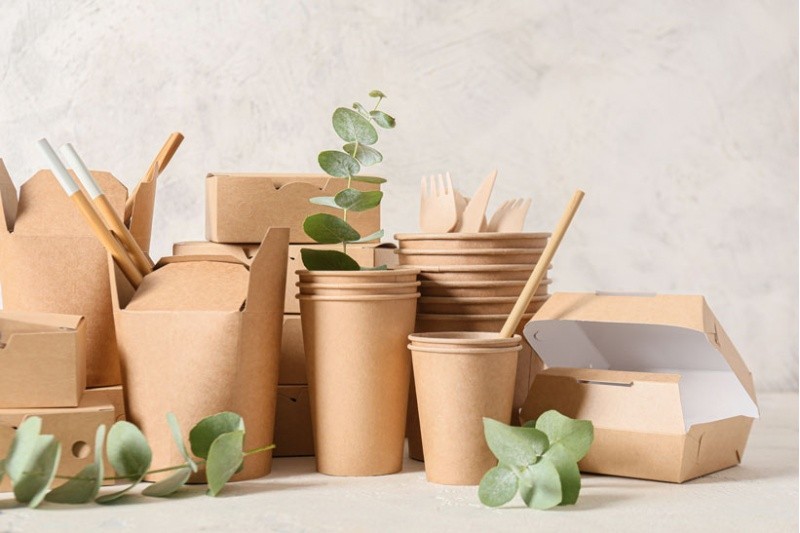
The final thing you need to consider when creating a package for your product is how eco-friendly it is. Ensuring you are using a green packaging solution is becoming increasingly important to customers, with research showing that nearly half of consumers actively avoid harmful packaging. Knowing, that your product is arriving in an environmentally friendly box will be the difference that helps them make that purchase for many potential customers.
Eco-friendly packaging is any packaging that has a reduced environmental impact and ecological imprint. Common features of eco-friendly, green or sustainable packaging are that it’s recyclable and/or reusable, made using responsibly sourced or recycled materials, and manufactured through an environmentally friendly process.
You may be wondering how you can ensure that your product packaging is environmentally friendly? Here are a few key steps you can take to make your packaging more sustainable.
When you’re designing your product packaging, try to ensure you’re only including what’s necessary.
Instead of single-use plastics, look at using materials that are biodegradable, compostable or recyclable like cardboard and paper.
When you’re choosing a manufacturer or supplier for your boxes, make sure to check that they have environmentally friendly processes in place and are FSC® certified.
The Forest Stewardship Council (FSC), runs a global certification system that allows you to identify and purchase, wood, paper, cardboard and other forest products made with materials from well-managed forests and/or recycled sources. So when you pick an FSC certified manufacturer for your product packaging you know that the boxes will be made with materials from sustainable sources.
We hope that you enjoyed this guide and that it helps you turn your product packaging ideas from a dream into a reality. If you need help getting your packaging designed and manufactured, why not get in touch with us and we’ll be more than happy to help.
Tell us what you need to package and let our friendly team of experts guide you through the options to find what's right for you.
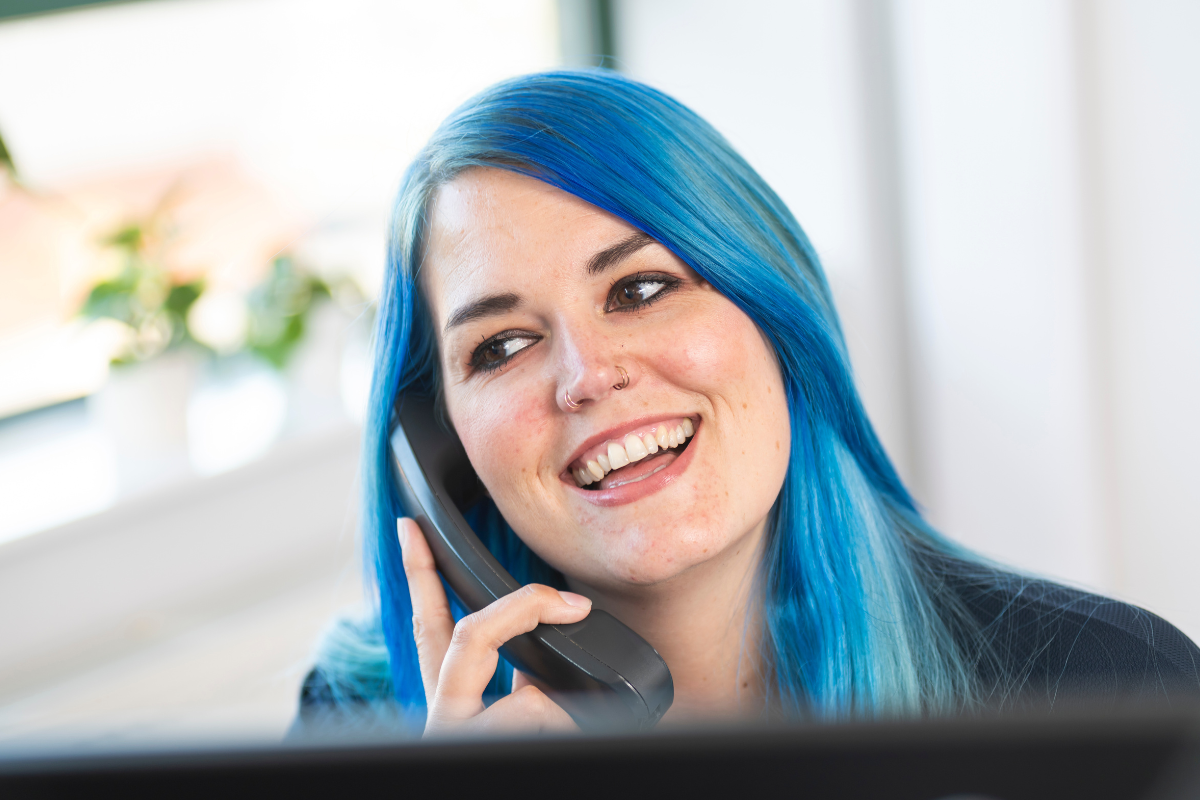
FAQ's
What are Belmont Packaging MOQ's?
Our MOQ starts from 1000 units depending on the size, style and material of the box.
How long does it take to receive a quote?
Once we have all the relevant information for your corrugated cardboard box requirements, we will aim to turnaround quotes within 24-48 hours.
However, complete bespoke designs will require longer including design time.
Check out some more FAQ's here!

This site uses cookies to monitor site performance and provide a mode responsive and personalised experience. You must agree to our use of certain cookies. For more information on how we use and manage cookies, please read our Privacy Policy.